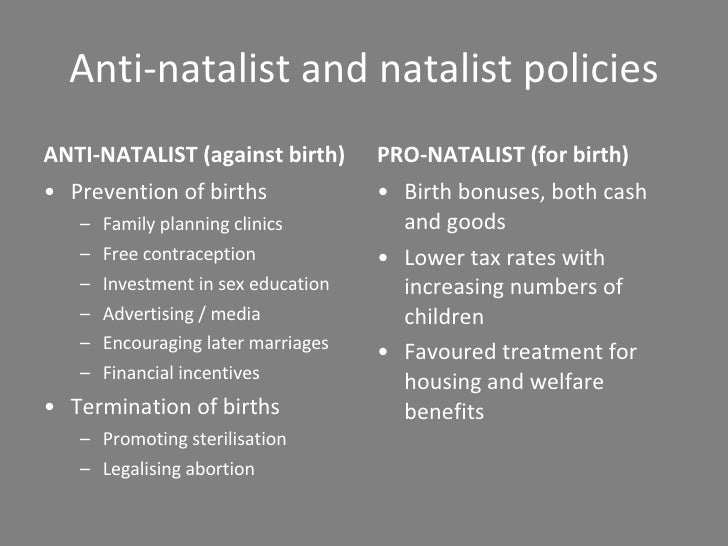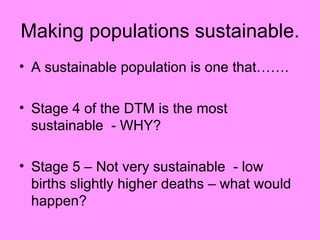As the global population approaches 8 billion, the challenges of managing population growth and ensuring sustainable development become increasingly urgent. Population policies are critical tools that governments and organizations can use to address these challenges effectively. This article explores various population policy strategies, their implications, and examples from around the world to illustrate their potential for fostering a balanced future.
The Importance of Population Policies
Population policies encompass a range of measures designed to influence demographic trends such as birth rates, death rates, and migration patterns. These policies can significantly impact economic development, social stability, and environmental sustainability. Understanding the importance of population policies requires a look at several key factors:
- Economic Growth: A balanced population can lead to a steady workforce, which is essential for economic development.
- Resource Management: Population policies can help manage resources more effectively, ensuring that future generations have access to essential services.
- Social Equity: Policies can promote gender equality and improve health outcomes, contributing to social stability.
- Environmental Sustainability: By addressing overpopulation, policies can mitigate environmental degradation and promote sustainable practices.
Understanding Different Population Policy Approaches
Population policies can be broadly classified into three categories: pro-natalist, anti-natalist, and migration policies. Each approach has its unique objectives and strategies.
Pro-Natalist Policies
Pro-natalist policies aim to encourage higher birth rates, often in response to declining populations or aging demographics. Countries like France and Sweden have implemented various incentives to promote family growth.
- Financial Incentives: Direct cash benefits, tax reductions, and child allowances can alleviate the financial burden of raising children.
- Parental Leave: Generous maternity and paternity leave policies allow parents to balance work and family life more effectively.
- Childcare Support: Providing accessible and affordable childcare services encourages parents to have more children.
For example, France offers a comprehensive family policy that includes substantial financial support for families, leading to a higher fertility rate compared to many other European countries.
Anti-Natalist Policies
Anti-natalist policies aim to reduce birth rates and manage population growth. These policies are often adopted in countries facing overpopulation or resource scarcity.
- Family Planning Services: Access to contraception and reproductive health education can help individuals make informed choices about family size.
- Legal Restrictions: Some countries, like China with its former One-Child Policy, have implemented strict regulations on childbirth.
- Awareness Campaigns: Promoting smaller family norms through education can shift cultural perceptions about family size.
China’s One-Child Policy, while controversial, is a notable example of an anti-natalist strategy that aimed to curb rapid population growth. Although the policy has since been relaxed, its long-term implications continue to shape China’s demographic landscape.
Migration Policies
Migration policies play a crucial role in shaping population dynamics, particularly in regions experiencing demographic imbalances. Countries may adopt policies to attract skilled workers or manage refugee populations.
- Skilled Worker Programs: Nations like Canada and Australia have established points-based immigration systems to attract talent and address labor shortages.
- Refugee Asylum Policies: Countries may implement policies to provide refuge to people fleeing conflict or persecution, contributing to demographic diversity.
- Integration Programs: Effective integration policies help immigrants adapt and contribute to their new societies.
Canada’s points-based immigration system is a successful example of how migration policies can be structured to fill labor gaps while promoting social cohesion.
Case Studies: Successes and Challenges
Examining specific case studies can provide valuable insights into the effectiveness of different population policies.
France: A Model of Pro-Natalist Policy

France has long been recognized for its pro-natalist policies, which have successfully increased birth rates. The government offers comprehensive support for families, including:
- Generous parental leave policies
- Substantial child benefits
- Affordable childcare services
These measures have contributed to a fertility rate of approximately 1.84 children per woman, one of the highest in Europe. The success of France’s approach highlights the potential for pro-natalist policies to support family growth while also fostering gender equality in the workplace.
China: The Legacy of the One-Child Policy

In contrast, China’s One-Child Policy, introduced in 1979, aimed to control population growth but has led to unintended consequences:
- Significant demographic imbalance, with a skewed gender ratio due to a cultural preference for male children.
- A rapidly aging population, leading to potential economic challenges in supporting retirees.
- Increased pressure on the younger generation, often referred to as the “4-2-1” phenomenon, where one child is responsible for two parents and four grandparents.
Although the policy was relaxed in 2015, the long-term effects continue to pose significant demographic challenges for China.
The Role of Technology and Innovation
As the world faces demographic shifts, technology and innovation can play a critical role in supporting effective population policies. These advancements can improve access to family planning, enhance data collection, and increase awareness of population issues.
- Data Analytics: Utilizing big data can help governments assess population trends and tailor policies effectively.
- Telemedicine: Expanding access to reproductive health services through telemedicine can reach underserved populations.
- Education Platforms: Online education can provide crucial information about family planning and health, especially in remote areas.
Innovative approaches can empower individuals to make informed decisions about family size and contribute to the overall effectiveness of population policies.
Conclusion: Towards a Balanced Future

Population policies are essential in navigating the complexities of demographic changes. With the global population expected to reach 9.7 billion by 2050, proactive and well-researched strategies are crucial for ensuring sustainable development. By understanding the implications of pro-natalist and anti-natalist approaches, along with effective migration policies, governments can address the challenges posed by population growth or decline. The case studies of France and China illustrate the diverse outcomes of these policies, highlighting the need for tailored solutions that reflect each country’s unique demographic landscape.
As we look to the future, embracing technology and innovation will be vital in implementing effective population strategies. By fostering a balanced demographic environment, we can work towards a sustainable and equitable future for all.



